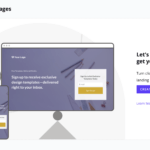Micro-SaaS is on its way to take over the startup industry as more and more products are being release in small niche markets and generating regular monthly recurring revenue for their founders. Is it any different from the “normal” SaaS and how do you build a Micro-SaaS in present days? We prepared the ultimate list of micro-SaaS ideas for you as well as the ideas for the future projects.
What’s the difference between SaaS and Micro-SaaS?
SaaS stands for Software as a Service
The software is distributed in most cases through a web browser, mobile app, or specialized client software designed to solve a set of problems. Customers pay per user or seat and in a monthly or annual basis.
Some of the biggest SaaS products out there are:
- Salesforce – The leading sales and customer management platform
- Adobe Creative Cloud – Graphic and media design tools
- ZenDesk – A cloud based ticketing system
- Slack – A channel based team communication platform
- Zoom – Cloud based video chat, conferencing, and webinars
- MailChimp – Email marketing service
- Zoho – A full suite of office, CRM, email, and marketing tools
What is Micro-SaaS?
Micro-SaaS products are SaaS platforms, however they focus on a small niche and customer base unlike the spread of the vendors listed above.
Micro-SaaS businesses operate with a very small, fast moving team. Many solo founders who have taken it on themselves to build their own bootstrapped solution for a very niche need.
When you run a SaaS platform as a small operation, you don’t need massive six figure MRR (monthly recurring revenue) goals to deliver a healthy regular return. In many cases, micro-SaaS products are built to solve the need of the founder themselves!
Typically, a micro-SaaS platform has the following operational qualities:
- Do only one thing, but every well.
- Run by an individual or small team
- Quick time for customer to onboard and use your product.
- Low effort to switch to your platform from their current
- Usually integrated with another product or service or sharable with other businesses
How do you build a Micro-SaaS business in 2023?
What I consider are two golden rules for micro-SaaS founders are:
- Find a problem that needs solving: Your product idea should be useful to your target market and also, provide a value to them they are willing to pay for.
- You need to find customers before you build your product.
Building a micro-SaaS startup isn’t easy. Many experts say your product “must be five times better than any existing product” to lead a niche market.
To achieve this, you must know your audience. Finding a problem that needs to be addressed may involve lots of research with people very close to the industry. If you are struggling to find ideas, go to networking events. Talk to people working day to day and understand what their struggles are and where they are wasting their time each day that you can bring value.
You must be able to build. If you are a technical founder, using a common SaaS template or platform can be easy. If you are a non-technical founder, you may need to look at building your micro-SaaS with a no-code solution or hire a no-code development firm to get your MVP built quickly.
You must be able to market. Just building your solution isn’t enough. You need to understand how to target Google searches using paid ads, reaching your target market, or using connections in the industry to get your product out there.
The last big challenge is one many micro-SaaS founders overlook. You must enjoy working on your product! You will be continually adding new features, addressing customer needs, and talking to your customers understanding how they are using your product. You must enjoy what you do if you want to succeed.
I don’t want to dumb things down too much, but to get your micro-SaaS product off the ground, I have put together a rough guide to getting started.
- Start with the problem you want to solve and then build the idea to solve it.
- Validate your idea. Do research, look at data, and research market competitors
- Find your first 10 customers. More if you can but you want 10 customers who love what you are doing.
- Build your MVP
- Launch your product to your initial customers
- Gather feedback from your customers. What they like, don’t like, struggling with?
- Launch a public release with paid subscription
- Grow your product to a larger audience using marketing strategies
- Automate as much backend work as you can. Onboarding, communications, feature releases
- Scale to support user growth
- Collect and add feature requests
- Sit back and enjoy your monthly revenue or look to sell the business on a popular marketplace.
How do you get micro-SaaS ideas to get started?
This is the million dollar question. What is the unicorn idea that can grow fast, find paying customers, and create a free stream of revenue.
For some micro-SaaS founders, it is solving a problem in their own industry. Finding a tool that helps save them hours each day. Automating a process that prevents data from getting distorted between multiple individual SaaS products they my use each day. For other founds, it is digging around other SaaS products for reviews, complaints, missing features, and pricing issues. Finding out what employees are complaining about. If there is enough demand, there will be something people are willing to pay for.
Performing validation of your idea is a key step in the process. A lot of people may have a cool idea for a product but the question is, are people willing to pay for it? Validation requires being honest and looking at actual data. Are there customers? Will they pay? Will they pay enough to build and support? Can you build it? What are the risks? Can you limit your risks or remove them completely? Will your version deliver something about the competition, enough for someone to go through the effort of switching?
Micro-SaaS ideas and trends for 2023
To get ahead of the popular micro-SaaS trends, you should research top tech trends. Currently, everything is about AI, ML, blockchain, and the move towards Web3.
Artificial intelligence (AI) and Machine Learning (ML)
AI has been coming for a long time. Skynet robots taking over the world. Androids walking among humans. Ok, well not really what the movies portray but AI is here and around us today. AI and ML juggle massive amounts of data every day. While we may be a bit away from a fully automated AI robot controlling our lives, there is a lot of power in AI assisted work that can be done. Using the power of AI to help assist workers be more productive or making sense of large amounts of data allows employees and business owners to maximize their time in the best way possible.
Low and No-Code Apps
Low/No-Code platforms can allow micro-SaaS founders to build their apps fast. They also open the door to allowing SaaS products to offer visual tools using a no-code product to help an end user automate their day to day. Some examples are visual sales pipelines that you allow you to automate your customer emails, phone calls, and out reach using a visual cadence tool.
Sales and Marketing
Micro-SaaS is about niche products. Don’t try to do everything like Salesforce. They are a lot more complex than most customers need and sacrifice doing one thing well to make up for doing a lot of things OK. Find where some products fall short and look at building tools that bolt on and integrate with other tools or, can be a standalone product that can be used in parallel with other products.
Micro-SaaS for freelancers and self employed
Gig working economy is huge and with the cost of living and rising prices, people will be looking for ways to make extra money. Running a ride-share service like Uber or Lyft takes legal, compliance, and plenty of logistics work however, there may be small niche areas that can connect people looking to work with tasks for people willing to pay.
Micro-SaaS Ideas for 2023
- Analytics and ROI tools
- Plugins and add-ons to existing SaaS products
- Communication tools
- Editing and writing
- Planning tools
- Virtual assistants
- Remote facilities
- Voice, IVR, collaboration, and chat services for niche markets
- Data gathering and feedback management
- Workforce and time management
- Process automation in marketing, sales, and other operations
- Invoicing, accounting, and financial planning
- Email management
- Training and learning
- Cryptocurrency management tools, automation, and predictions
- Social media marketing automation
- Product management
- Construction management











